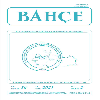Abşeron'a getirilen Passiflora edulis L. Türünün Yapraklarının Morfometrik Parametrelerinin Değişimi
İntroduse, varyasyon, morfometrik analiz, heteroblast, popülasyon
Variation of Morphometric Parameters of Passiflora edulis L. Species Leaves, First Introduced to Absheron
Introduction, variation, morphometric analysis, heteroblast, population,
___
- Amanda Mendes Fernandes, Evandro Alexandre Fortini, Larissa Areal deCarvalho Müller, Diego Silva Batista, Lorena Melo Vieira, Priscila Oliveira Silva,Cibele Hummel do Amaral, Richard Scott Poethig, Wagner Campos Otoni. 2020. Leaf development stages and ontogenetic changes in passionfruit (Passiflora edulis Sims.) are detected by narrowband spectral signal. Journal of Photochemistry and Photobiology B: Biology. Volume 209, August 2020, 111931
- Barbalho, S.M., M.S.S.Savza, J.C.P.Silva,C.G.Mendes,G.A.Oliveira, T.Costa and F.Machado 2012. Yellow Passion Fruit Rind (Passiflora edulis ): an İndustral Waste or an Adjuvant in the Maintenance of Glycaemia and Prevention of Dyslipidemia. Journal of Diabetes Research and Clinical Metabolism. (14 ): 1-5
- Boratynski A., Marcysiak, K., Lewandowska, A., Jasinska, A., Iszkulo, G. & Burczyk, J. (2008). Differences in leaf morphology between Quercus petraea and Q. robur adult and young individuals. Silva Fennica 42(1): 2008., p. 115–124
- Busilacchi, H.,C. Severin , M. Gattuso, A. Aguirre, O.Di Sapio and S. Gattuso,2008.Field Culture of Micro propagated Passiflora caerulea L. Historical and Chemical Studies. Redalyc Sistema de İnformacion Cientifica. 7(5):257-263.
- Cerqueira-Silva CB, Jesus ON, Santos ESL, Correa RX,Souza AP (2014) Genetic Breeding and diversity of the genus Passiflora: Progress and perspectives in molecular and genetic studies.İnternational Journal of Molecular Sciences, 15:14122-14152.
- Cronquist A.1988. The evolution and classification of flowering plants, 2nd edn. New York: New York Botanical Garden.
- Cutri L, Nave N, Ami MB, Chayut N, Samach A, Dornelas MC.2013. Evolutionary, genetic, environmental and hormonal- induced plasticity in the fate of orqans arising from axillary meristems in Passiflora spp. Mechanisms of Development 130: 61-69.
- Daniel H. Chitwood,Wagner C. Otoni 2017. Divergent leaf shapes among Passiflora species shared juvenile morphology. DOİ: 10.1002/pld3.28
- De Wilde WJJO.1971. The systematic position of the tribe Paropsieae, in particular the genus Ancistrothyrsus, and a key to the genera of Passifloraceae. Blumea: 99-104.
- Gilbert, L.E. (1982). The coevolution of a butterfly and a vine. Scientific American, 247, 110-121. 10.1038/ scientificamerican 0882-110.
- Goebel, K. (1908). Einleitung in die experimentelle Morphologie der Pflanzen.
- Jensen, R. J. (1990). Detecting shape variation in oak leaf morphology: a comparison of rotational‐fit methods. American Journal of Botany, 77(10), 1279-1293.
- Guliyev, R. Genetics / R. Guliyev, K. Aliyeva; - Baku: Baku University Press, - 2002. - 396 p. (in Azerb.)
- Lorenzi, H.; Matos, F.J.A. Plantas medicinais no Brasil: nativas e exoticas. Nova Odessa: İnstituto Plantarum de Estudos da Flora,2002. 544p.
- O.V. Ibadli, A.D.Mehraliyev. Baku-2012. In the Question of Ivy Plants. 222 p. (in Azerb.)
- Patel,S.S.,T.S., Mohamed Saleem, V.Ravi, B.Shrestha, N.K.Verma and K. Gauthaman. 2009, Passiflora incarnata Linn: A Phytopharmacological Review. İnternational Jurnal of Green.
- Plotze RDO, Falvo M, Padua JG, et al. 2005, Leaf shape analysis using the multiscale Minkowski fractal dimension, a new morphometric method a study with Passiflora (Passifloraceae). Canadian Journal of Botany 83: 287-301.
- Silva GF, Silva EM, Correa JP , et al. 2019. Tomato oral induction and ower development are orchestrated by the interplay between gibberellin and two unrelated micro RNA – controlled modules. New Phytologist 211: 1328 – 1344.
- T.S.Mammadov. 2010 Trees and shrubs of Absheron. Baku, 2010.- 468 pages.
- Türemiş, N., 2012. A New Grape Fruit “ Passionflower” and Its Economic Importance. IV. National Symposium on Berries, 03-05 October 2012 Antalya, 23 p.Leipzig, Germany: B.G.Teubner Pharmacy .pp:277. (in Turk.)
- Uzunoğlu, F. and K. Mavi, 2014. A Medical Miracle; Passionflower (Passiflora spp.) Plant. International Mesopotamia Agriculture Congress, 22- 25 September 2014.620 p. (in Turk.)
- Y.Karimov, T.Suleymanov, C.Isayev, C.Khalilov. Farmakoqnoziya. Bakı – 2010. 738 p. (in Azerb.)
- Zaur Humbatov 2017. Plant morphology and anatomy (textbook), Baku, ̓ ̓Apostroff̓̓”, 692 p. (in Azerb.)
- ISSN: 1300-8943
- Yayın Aralığı: 2
- Başlangıç: 1968
- Yayıncı: Atatürk Bahçe Kültürleri Merkez Araştırma Enstitüsü
Abşeron'a getirilen Passiflora edulis L. Türünün Yapraklarının Morfometrik Parametrelerinin Değişimi
Sıcaklık Faktörünün Bitkiler Üzerindeki Etkileri ve Yüksek Sıcaklık Stresi
Fulya BAŞARAN, Zakire Tülay AYTAŞ AKÇİN
Scarlet Spur Elma Çeşidinin Hasat Sonrası Kalitesine Hasat Zamanı Ve 1-MCP Uygulamasının Etkileri
Cemile Ebru ONURSAL, Mehmet Ali KOYUNCU
Kirazlarda Tepe Kesiminin Büyüme, Verim Ve Meyve Kalitesi Üzerine Etkisi
Alpcan AKIN, Dilek SOYSAL, Derviş Emre DOĞAN, Adis LIZALO, Hüsnü DEMİRSOY
Bazı Kestane Çeşitlerinin Erkek Çiçek Yapıları Üzerinde Araştırmalar
Farklı Lens Solüsyonlarının Gerberanın (Gerbera jamesonii cv. Amulet) Vazo Ömrü Üzerine Etkileri
İlknur KORKUTAL, Elman BAHAR, Batuhan KOSKOSOĞLU
Mantarda Şişe Kültürü Teknolojisi ve Türkiye’de Yapılan Çalışmalar
